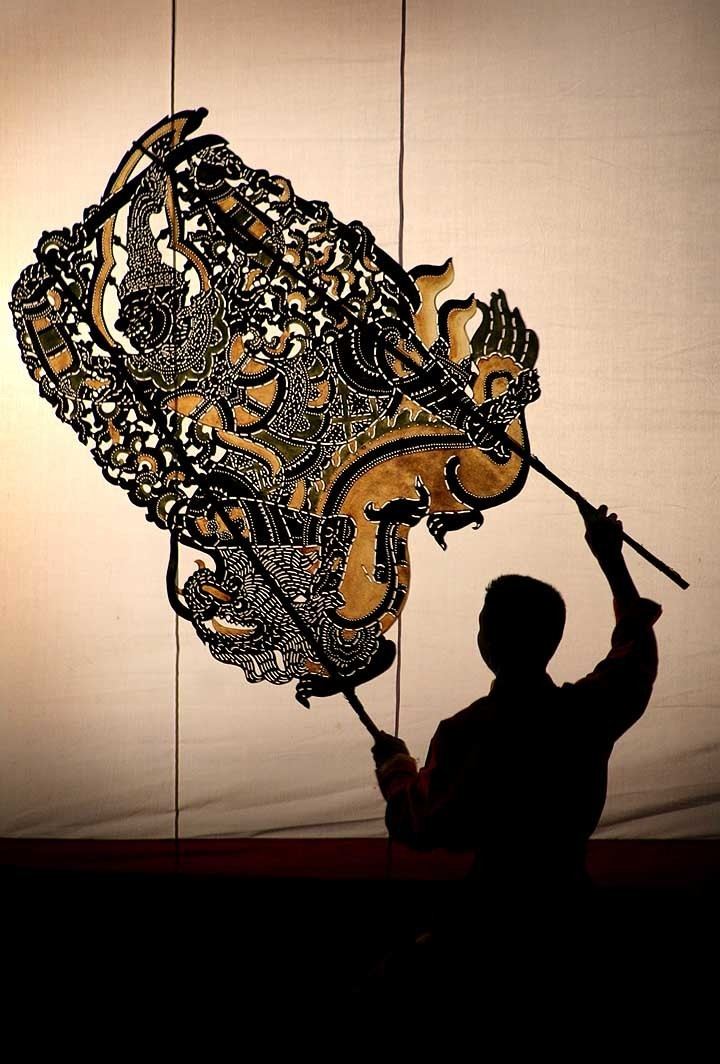 | ||
Nang yai (Thai: หนังใหญ่) is a form of shadow play found in Thailand. Puppets are made of buffalo hide, while the story is narrated by songs, chants and music.
Nang literally means skin or hide; in common usage, a drama puppet or drama; by extension, motion picture films. "Nang Yai" specifically means "large shadow puppet". It is a high art form that originated the beginning of the fifteenth century CE. Nang yai performances were a popular means of entertainment during the Ayudhaya period and are mentioned in a poem called Bunnovat Khamchan written by the Buddhist monk Mahanag sometime around the years 1751 to 1758 CE, at the end of King Boromakot's reign.
Nang Yai is the source of modern mask dance, and incorporates various episodes of an Indian epic called Ramakien in Thai and Ramayana in India. Nang yai performance also adopts the Ramayana as a leading story and the performance is episodic in each show.
The performance of large shadow puppet is traditionally held in open spaces such as a lawn or village dirt space.
The main components of Nang Yai are a 6 by 16 white screen held by four bamboo or wood poles on each side. The screen is trimmed by red strip. Behind the screen strands a tinder or a bonfire lit up to reflect the shadows of the puppet. During the course of the show there is a Thai music band that plays music in accordance with each episode of the performance. Also important in each shadow is a dubber, whose tradition continued to be of importance in film dubbing.
The puppet figures are made from perforated cow or buffalo hide, each weighing about three or four kilograms. The biggest puppet is one which characterizes a place, weighing around five to seven kilograms.
Nang Yai can be found presently throughout Thailand. For example, in central Thailand, Nang Yai is performed at Khanon in Ratchaburi, Wat Plub in Petchaburi, Wat Sawang Arom in Singburi, and Wat Pumarin in Samut SongKram, while in eastern Thailand it can be found at Wat Donin in Rayong Province.
